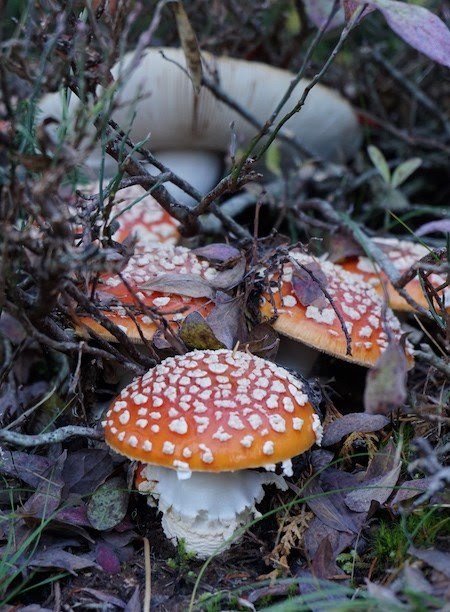
NPS How much room do fungi need to grow? As mushroom as possible! Mycorrhizal fungi form a mutualistic relationship with the redwoods and other plants in the forest. A mutualistic relationship is when both organisms benefit. The fungi will combine their mycelium with the tree’s roots. As a result, the fungi make it easier for the trees to get more nutrients and moisture from the soil and the fungi get access to sugars from the trees. 
NPS Redwoods have shallow root systems. They only go down about 6-12 feet deep! Yet, even though redwood roots don’t go down deep, they spread out wide. A single redwood can have a root system that spreads 60-100 feet around it! Redwoods in a forest will intertwine their roots together to make a wide, intricate mat beneath the soil. Mycorrhizal fungi will combine their mycelium into this mat of roots, making a vast network. This connects the fungi with the other plants throughout the forest. These connections become an information and nutrient exchange system for plant life in the forest. For Further Reading:Molina, Randy. “The Role of Mycorrhizal Symbioses in the Health of Giant Redwoods and Other Forest Ecosystems.” USDA Forest Service Gen. Tech., 1994, pp. 78–81., https://www.fs.usda.gov/psw/publications/documents/psw_gtr151/psw_gtr151_12_molina.pdf. Stamets, Paul. Mycelium Running: How Mushrooms Can Help Save the World. Ten Speed Press, 2005. |
Last updated: September 8, 2025
